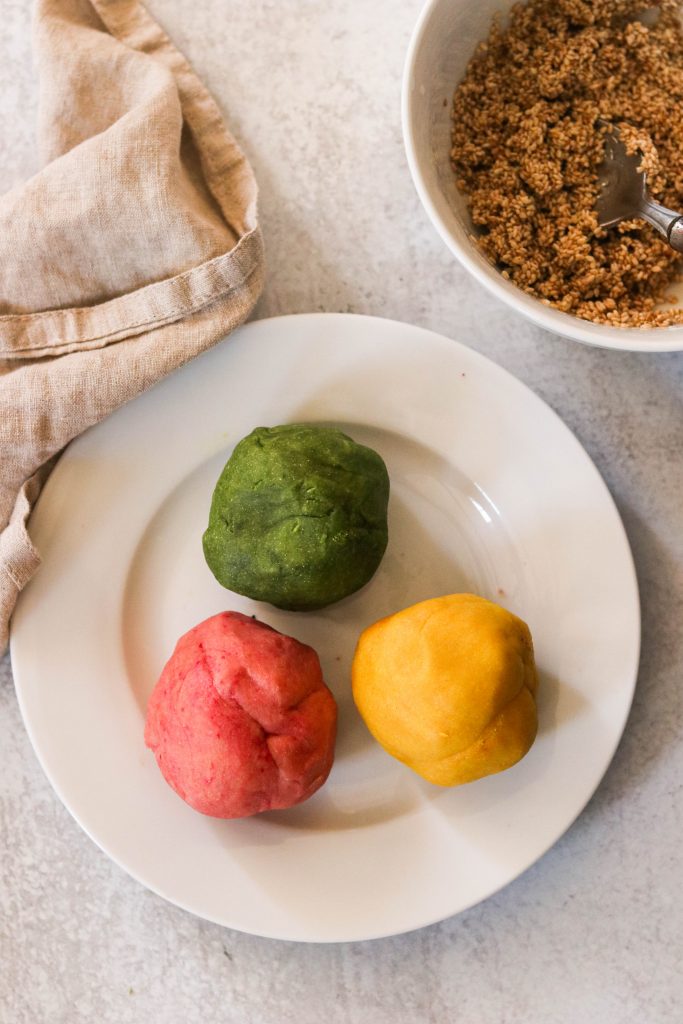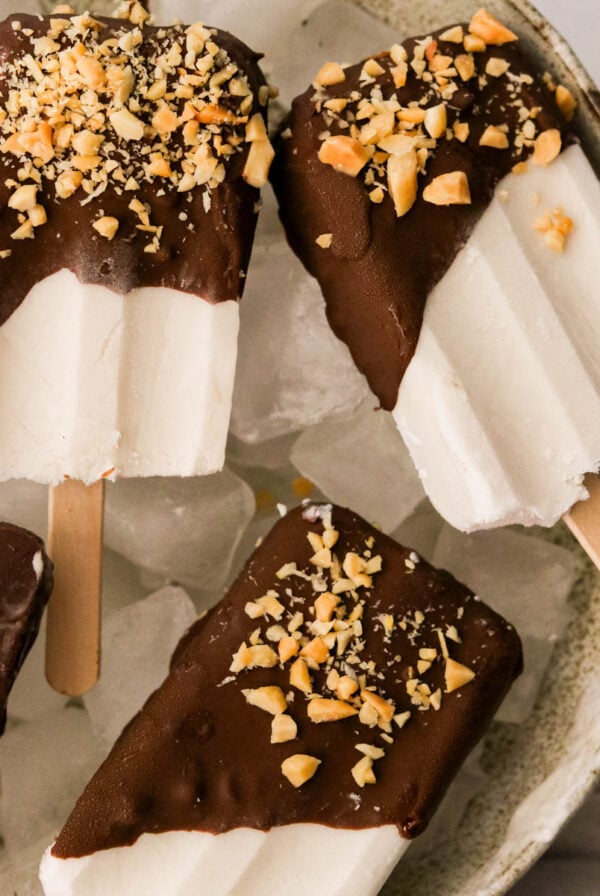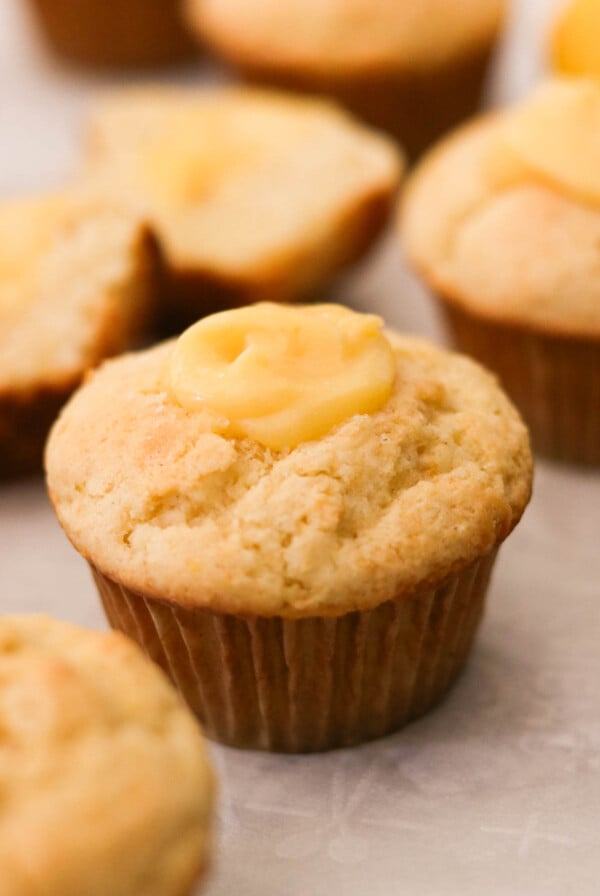This post may contain affiliate links. Please see our disclosure policy.
This paleo songpyeon recipe is a grain free and rice free version of the Korean rice cake dessert filled with sweet sesame eaten during Chuseok, Korean Thanksgiving. It’s chewy and so delicious!

Songpyeon was one of my favorite Korean dessert recipes growing up. Traditionally, Korean desserts are not enjoyed often like how it is in the US. They are reserved for special occasions and holidays, just a handful of times of the year. Songpyeon is one of the most popular Chuseok recipes, and the most iconic of Korean Thanksgiving food.
What is Songpyeon?
If you’ve never heard of songpyeon before, it’s a traditionally Korean rice cake dessert stuffed with sweet fillings, like sweetened beans, chestnuts, or the most popular: sweet sesame mixture. It’s chewy, delicious, and it’s the first thing that comes to mind when I think of Korean Thanksgiving food. They come in various colors, dyed with natural food coloring.
Paleo Songpyeon Recipe (Korean Rice Cake Dessert)
This paleo songpyeon recipe is grain free and not made with sweet rice flour, but still has that chewy and wonderful texture and flavor that so many of us Koreans love! Think of it as sweet dumplings with thicker and chewier wrapper. This version uses sweet sesame mixture for the filling, because it’s honestly my favorite!

How to Make Songpyeon
Making this paleo songpyeon recipe is very similar to how you make dumplings. You make the wrapper and then the filling separately, then combine them together before cooking them.
Ingredients
There are 2 main components to this songpyeon recipe: the wrapper and the filling.
For the wrapper:
- cassava flour: I can’t recommend any other flour to substitute cassava flour. It’s what gives the wrapper that sticky sweet rice flour-like texture.
- blanched almond flour
- tapioca starch: Arrowroot starch can be used instead in a pinch
- sea salt
- eggs
- rice vinegar
For the filling:
- toasted sesame seeds
- honey
- coconut sugar
- sea salt
Step By Step Directions
- First combine the ingredients for the wrapper: Add the flours, salt, eggs, and rice vinegar to a bowl and stir with a fork until crumbly. Add additional ingredients depending on what color you want the wrapper to be.
- Knead until it becomes a doughy texture. Add more water if the dough is too dry, 1 tbsp at a time. Wrap in a plastic wrap and chill until ready to use.
- Add all ingredients for the sweet sesame filling in a food processor and pulse a few time until fragrant. The sesame seeds should be broken down just a little bit and shouldn’t be powdery. Stir together a with a spoon.
- Cover the dough with a plastic wrap as you work. Make a ball with the dough, about 1-inch wide. Flatten it out into a circle, using your thumb to make an indent in the center, and add about 1/2 tsp of the sesame filling into the center. Fold the dough in half to cover the filling, and pinch the edges together like a dumpling. Set aside, covered under a plastic wrap.
- Steam the songpyeon for 12 minutes, laying them out so they don’t touch each other. Once they are finished steaming, run them under cold water, then toss generously with sesame oil before serving.


How to Dye Songpyeon Naturally
Traditionally, this Korean Thanksgiving food is colored naturally with ingredients that may not be easy to find in the US. For example, popular colorants are mugwort powder for green, kabocha squash for yellow, and dried fruit powders for pink and purple.
I was actually able to dye my paleo songpyeon naturally as well, but with ingredients that are easier to find for us! You really can’t taste them in the findal product:
- For yellow: turmeric powder
- Green: matcha powder
- Pink: beet puree
Depending on what you use, the moisture level might vary a bit. For example, pureed beet has a lot more moisture than turmeric and matcha powder. This is why you want to adjust the water level according to how the dough feels after you add the colorants.

Helpful Tips and Notes About This Paleo Songpyeon Recipe
- If you are dying the dough, the colors will look much more vibrant before cooking, so don’t be surprised at how dark they look when you first make the dough.
- Make sure to keep uncooked dough covered with a plastic wrap so it doesn’t dry out. This is also important after you shape and fill the songpyeon before steaming them.
- The dough should be the texture of playdough, and be easy to shape. If it’s too dry, add a little bit of water at a time and knead until it becomes the right texture. If it’s too wet, you can try adding more cassava flour and then letting it sit covered in the refrigerator for 10 minutes until it firms up.
- Make sure to coat with sesame oil before serving. This ensure that the dough won’t stick to each other, and keeps the moisture in.
- This songpyeon recipe is best enjoyed warm. The cooked dough will lose its rice-like stickiness when chilled. If you have leftovers, chill covered until ready to eat and then re-steam for 3-4 minutes before enjoying.

Want More Chuseok Recipes?
You can find paleo and grain free traditional Chuseok recipes and other delicious Korean dessert recipes in my cookbook, Korean Paleo. Some of these recipes include:
- Bulgogi (BBQ Beef)
- Japchae (Stir-Fried Sweet Potato Noodles)
- Kimchi Buchimgae (Kimchi Pancakes)
- Galbijjim (Braised Beef Short Ribs)
- Buchujeon (Garlic Chive Pancakes)
- Sigeumchi Namul (Spinach Salad
- Hoddeok (Sugar-Filled Pancakes)
- Gang Jeong (Sesame Candy)
- YakGwa (Honey Cookies)
Make sure to grab the cookbook here!

If you enjoyed these paleo songpyeon recipe, you might also like:
- Kkakdugi – Korean Radish Kimchi (Paleo, Whole30, Keto, Vegan Option)
- Essential Ingredients for Korean Paleo Cooking
- Paleo Slow Cooker Korean Oxtail (Kkorijjim)
- Fluffy Korean Steamed Eggs (Gyeran Jjim Recipe)
- Kimchi Braised Keto & Whole30 Pork Ribs (Dweji Galbi Kimchi Jjim) – Stove Top & Instant Pot Method!

Paleo Songpyeon Recipe (Korean Rice Cake Dessert)
Ingredients
Songpyeon wrapper
- 1¼ cup cassava flour
- 1/2 cup blanched almond flour
- 1/4 cup tapioca starch
- 1/8 tsp sea salt
- 2 large eggs
- 1 tbsp rice vinegar
For white dough
- Water, as needed
For yellow dough
- 2 tsp turmeric powder
- Water, as needed
For green dough
- 4 tsp matcha powder
- Water, as needed
For pink dough
- 2 tbsp pureed beets
- Water, as needed
Sweet sesame filling
- 1/2 cup toasted sesame seeds
- 2 tbsp honey
- 1 tbsp coconut sugar
- 1/8 tsp sea salt
Other ingredients
- Cold water
- Sesame oil
Instructions
- Make the wrapper dough by combining all the ingredients together in a bowl and stirring together with a fork until crumbly.
- If dying the dough, add the colorant ingredient first (without water) and stir together. The amount of colorant needed for each color is for the entire dough so divide accordingly if you are making multiple colors from one batch.
- Add 1 tbsp of water at a time while kneading, until the consistency becomes like playdough and can easily shaped. Wrap in a plastic wrap and chill in the fridge while you make the filling.
- Combine all filling ingredients in a food processor and pulse a few times until the sesame seeds are broken up a bit and become fragrant. You don't want it to be powdery. Stir the mixture together.
- Remove the dough from the fridge and keep it covered while you work. Shape the dough into a 1-inch wide ball, then flatten in to a circle while making a small indent in the center with your thumb. Add about 1/2 tsp of the sesame filling. Fold the dough in half to cover the filling and pinch the ends to close like a dumpling. Place the finished songpyeon on a plate under a plastic wrap while you work.
- Add 1 cup of water to a pot and place a steamer basket on top of it. Line the steamer basket with a cheesecloth. Bring the water to a boil over medium high heat. Add the songpyeon to the steamer basket, making sure they aren't touching each other. Cover and steam for 12 minutes.
- Use a tong to remove the steamed songpyeon from the pot to a colander. Immediate run under cold running water for 10 seconds.
- Drain well, and generously drizzle with sesame oil and toss together. Enjoy warm!
Nutrition
Nutrition information is automatically calculated, so should only be used as an approximation.
Regarding other affiliate links and affiliate relationships: In order for me to support my blogging activities, I may receive monetary compensation or other types of remuneration for my endorsement, recommendation, testimonial and/or link to any products or services from this blog. Thank you for your support and understanding.






Hi Jean! I am so excited to try making this, but am slightly intimidated as it will not be served immediately. My son is bringing it in for a “World Fair” at his school and I plan to bring this in in the morning time (a few hours before the fair actually starts). How do you think it will hold up over the course of a few hours in an airtight container?
Hi there! It might firm up slightly once cooled for a while, but it’ll be okay. Make sure to coat with sesame oil so they don’t still together.
Hi Jean! I have been so grateful for your blog and have been continuously returning to your site because I love your recipes. I am Korean American, and have been eating strict paleo for quite a while now, and it has helped immensely in helping me to heal from some autoimmune issues I had in the past couple years. Thank you so much for simple, delicious recipes, and your site is also beautiful and attractive!
I am really craving ddukguk/manduguk to eat this Friday. I couldn’t find a recipe on your blog but I did find this songpyeon recipe. Do you think this dough recipe would work too for ddukguk dduk and the pi for mandu? I’m not sure it will hold in a soup. If not, do you have any suggestions for how to make that? I also ordered your book and it’s arriving this Thursday so I’m hoping maybe there’s a recipe for it in there.
Would love any tips you can offer! Your work is a blessing to me – thank you again!!!!
Sorry – I just saw this! I wouldn’t use this in soup. It’ll turn into a sticky mess. I haven’t found a good grain free alternative to rice cakes in broth yet. I do have a manduguk recipe in my cookbook and you can use that recipe. Hopefully I’ll have a ddukgukdduk recipe in the future but not yet!